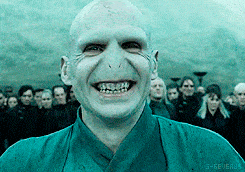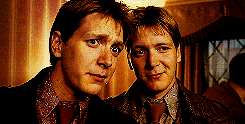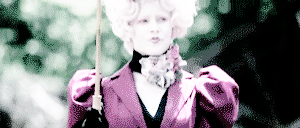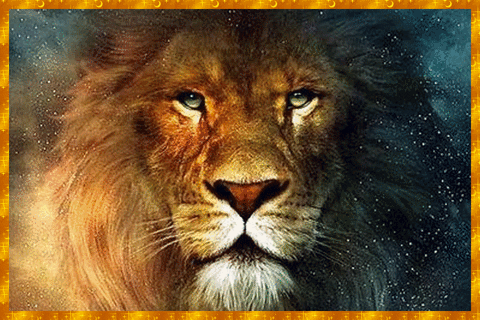Character 101: Types of Characters
- Alina Wells

- Jan 21, 2020
- 8 min read
Updated: Feb 23, 2020

You're probably familiar with the old African adage: "It takes a village to raise a child". While a child needs the nurturing and care of an entire community to grow up well, so does your writing project. The nurturing and caring comes from you, the writer. The community is the cast of characters who support your protagonist. No matter what genre you write in, we all need a strong cast to move our narratives along and keep our readers intrigued. The best way to start building your protagonist's support system is to first understand the types of characters you can use, and what roles/purpose they serve within your story.
Most of you to some degree are already familiar with characters. You've grown up seeing them in books and films and have an understanding of the roles they fill and why. You know there are "heroes", "villains", and "sidekicks". Here we will explore their technical names and classify them into two different categories: role and quality.

Roles we'll be exploring:
Protagonist
Antagonist
Deuteragonist
Tertiary
Confidante
Romantic Interest
Foil

Qualities we'll be exploring:
Dynamic/changing
Static/unchanging
Stock
Symbolic
Round
I'd like to note that within both role and quality there is room for overlap. Your character could be both deuteragonist and confidante to your protagonist. Your antagonist could also be the love interest to your protagonist (talk about complicated!) Your dynamic protagonist could also be symbolic. These are interchangeable and you can try out different combinations depending on what best suits your story.
Types of Character Roles

1. Protagonist:
This is an easy one! This is the main character, the one who the story is based upon. They are the perspective that carries the story (though not necessarily the point-of-view through which the story is told) and most of the action centers around them. When you read about them, they are the character you care about the most.
Every story has to have a protagonist. No exceptions. You can bend and twist many of the rules of writing, but not this one. If you don't have a protagonist, you don't have a plot. If you don't have a plot, then you won't ever have a story. For this reason, this is the first character you should create when developing an idea, as all of the other characters exist to support or oppose this one person.
Protagonist examples: Harry Potter, Frodo Baggins, Katniss Everdeen, Hamlet, Jane Eyre, Scarlett O'Hara, Superman, Indiana Jones, and Luke Skywalker.

2. Antagonist:
The antithesis of your protagonist, their arch nemesis, the bad guy. Arguably one of the most fun characters to write, this is the person who (for whatever reason) will not and cannot let your protagonist succeed in their quest. They are the second character that your reader cares most about, but they are not as transparent. They usually have less time in the spotlight, and operate in secret (all the better to catch the protagonist and your readers off guard). Cue evil laugh here.
Traditionally you see a "good" protagonist and an "evil" antagonist and this is their main source of beef with each other. In modern times you see this change a lot and today you see a lot of "gray" matter when it comes to antagonists. This is fantastic because it allows you as the writer to explore and blur the lines between what is right and wrong. It allows you to build a character who is so uniquely human that they almost become as lovable and sympathy-drawing as your protagonist, even though they end up doing horrific things. You see this in anti-heroes too, with the key difference being that they are their own kind of protagonist instead of antagonist.
Antagonist examples: Voldemort, Sauron, President Snow, Darth Vader, The White Witch, Lady Macbeth, Iago, Dracula, and Count Olaf.

3. Deuteragonist:
Similar to the protagonist, this is the character who is closest to them. They are not the main figure in the limelight, but they are pretty damn close. Another name for these types of characters would be a "sidekick". They accompany the protagonist, give advice, help battle the antagonist, provide emotional support/encouragement, and generally lend a helping hand. They provide the warm and fuzzy "heart" of your story, which connects your readers to the plot and makes them feel emotionally invested in your protagonist and their struggles.
However, not all deuteragonists are the friendly sort. Some declare themselves "enemies" to your protagonist. This can also be a good thing because they lend further depth to your story and can still help further endear your protagonist to your readers. They showcase how your protagonist handles the constant obstacles thrown their way and can be super rewarding (especially if they turn into a friend or a love interest later on after being won-over).
Deuteragonist examples: Ron and Hermione, Samwise Gamgee, Dr. Watson, Mercutio, Robin, Huckleberry Finn, Piglet, and Horatio.

4. Tertiary Characters:
These are the background characters. They float in and out of the protagonists life, only appearing in select scenes for a specific purpose. Their purpose is to help move the story along and not much else. Usually good stories have more than just one of these. After all, real life has them too. Think about the random barista you see once a week, that co-worker you only say hello to whenever you pass them in the hallway, or the random kid you sit next to in class but don't really know.
Tertiary examples (with sources included): Radagast from The Lord of the Rings, Fred and George in Harry Potter, Mr. Poe in A Series of Unfortuante Events, the White Rabbit from Alice in Wonderland, Friar Laurence in Romeo and Juliet, Calo and Fabrizio in The Godfather, Madame Stahl in Anna Karenina, and Tim Wheddon from Dear John.

5. Romantic Interest:
The most memorable stories usually have some form of a love plotline worked in. This is because love is one of the main things that we as humans long for and fight over. It may be the main plot, subplot, or just a flickering of it over a few pages, but no matter what there has to be a love interest involved.
Romantic interests usually appear as deuteragonists, but they don't necessarily have to be. Your protagonist can also have various reactions to them. For instance instead of being friends with them beforehand or being immediately attracted to each other, they can even be enemies or someone who grows on your protagonist before they fall in love. The ideas are endless so have fun with it!
Romantic Interest examples: Mr. Darcy, Daisy Buchanan, Peeta Mellark, Edward Cullen, Rhett Butler, Romeo/Juliet, Four, Noah and Allie.

6. Confidante:
These characters can be incredibly profound, but often get swept under the rug in favor of a love interest. For this reason they are a little harder to pick out because they are often mixed in with other character types. This is the "best friend" character, the love interest, or the mentor. This is the person your protagonist shares their thoughts and feelings with that they are hesitant to share with anyone else. Or it's the person that they feel like they have to share their thoughts with because they have no other choice.
Confidant examples: Jacob Black, Professor Dumbledore, Hannibal Lector, Dr. Jennifer Melfi from The Sopranos, Dimitri from Vampire Academy, Gandalf, Yoda, Rupert Giles from Buffy the Vampire Slayer, and Haymitch Abernathy.

7. Foil Character:
This is a character whose values and personality clash with that of the protagonists. The purpose of a foil is to highlight the characteristics of the protagonist so that we can see them for who they truly are. Though this relationship is typically antagonistic, they are not usually the antagonist.
Sometimes they even get past their differences and become friends or lovers. What relationship your protagonist and their foil share depends largely on the traits you give your foil. For example, if the reason they clash is because one is idealistic and the other is cynical, then there's no reason prohibiting them from getting along as friends at some point. But if one is selfless and the other is incredibly selfish, then they probably won't ever get along.
Foil Character examples: Draco Malfoy, Effie Trinket, Lydia Bennet, Mia Rinaldi from Vampire Academy, George and Lennie, Kirk and Spock, and Mercutio.
Types of Quality Characters

8. Dynamic/Changing Character:
A dynamic character is one who changes throughout the story. They typically learn and grow into a better person, though they can go in the opposite direction and devolve too. Your protagonist needs to be a dynamic character and many of your deuteragonists need to be as well. These changes need to come about subtly and naturally in order to emulate real life, so keep that in mind as you write.
Dynamic Character examples: Elizabeth Bennet, Don Quixote, Walter White, Rose Hathaway, Neville Longbottom, Walter White, Han Solo, Ebenezer Scrooge, and Sherlock Holmes.

9. Static/Unchanging Character:
This is the character who does not change. Their purpose is to emphasize the change that is occurring in your protagonist and to bring in sympathy for your protagonist. They refuse to change and are ignorant to how they are treating the protagonist. They are the characters we all "love to hate" and the ones that we all fear turning into. You want to make sure that if you use this type of character that they remain in the background, as they generally fall "flat" due to a lack of depth.
Static Character examples: Mr. Collins, Harry and Zinnia Woodworm, The Dursley's, Anastasia and Drizella, Karen Smith, Sherlock Holmes, and Miss Havisham.

10. Stock Character:
These are similar to archetypes, in the sense that they are the same type of characters that you see throughout literature. Examples are the mentor, the joker, the hero, etc. This is another type that you need to be wary of due to "flatness". They can be used as a starting point, but you have to develop them more in order for them to be of any use.
For example, Megara in Disney's Hercules is a damsel-in-distress figure, but due to her sassy personality and strength of will when it comes to doing the right thing, she ends up saving her "hero" from time to time. This makes her more interesting as she is someone who breaks outside of the traditional mold while still physically adhering to it.
Stock Character examples: Professor Dumbledore, Gandalf, Clopin Trouillefou from The Hunchback of Notre Dame, Snow White, Andromeda from Greek mythology, Charlotte from Charlotte's Web, The Giver from The Giver, Mammy from Gone with the Wind, and the Crazy Cat Lady from The Simpsons.

11. Symbolic Character:
These characters represent the overall big-picture, the moral or theme of the story. This must be done delicately so that it doesn't come off as too "preachy" to your readers. For this reason we may not even see the full purpose of a symbolic character's existence until the end of the story.
Emily Bronte used everything within her novel Wuthering Heights to symbolize the wild nature of her characters Cathy and Heathcliff. From their tumultuous relationship and fiery tempers, to the way she describes the scenery it all subtly reinforces this main theme.
Symbolic Character examples: Aslan, Jonas from The Giver, Boo Radley, Yubaba from Spirited Away, The Ghost of Hamlet's father, Jay Gatsby, Big Brother, Atticus Finch, and Hester Prynne.

12. Round Character:
A round character is similar to a dynamic one in that they change throughout the duration of the story. The difference is that while a dynamic character subtly changes over time, readers can already surmise that a round character is multi-faceted and has a lot of depth due to change that has already occurred. They already have a full backstory, complex emotions, and realistic motivations. These characters make up some of the most interesting ones, as they are deeply flawed individuals and it's for this reason that they capture our attention.
Round Character examples: Winston Smith, Jay Gatsby, The Beast, The Grinch, Jasmine from Aladdin, Hamlet, Anakin Skywalker, Atticus Finch, and Michael Corleone.
Now that you know these different types of characters and how to use them, go back and revisit what you've been brainstorming since this series started. Start building your "village" that will work to support your protagonist throughout their journey. Reference back to the character building worksheets from the first post in January's Character Month and see what you come up with! The sky is the limit.






Comments